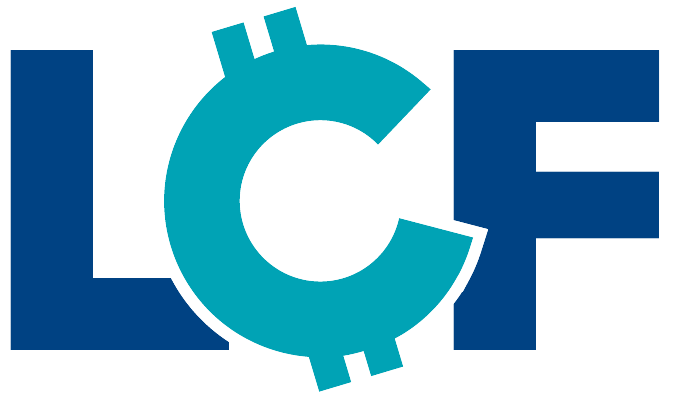Payroll Loans: How to Use Them
Lets Get Started
Payroll is essential to running a business, and ensuring that your employees are paid on time is crucial. However, cash flow issues can sometimes arise, making it difficult to cover payroll costs. In these situations, payroll loans can be a lifeline for business owners. In this blog post, we’ll discuss payroll loans, the different types available.
Understanding Payroll Loans
Payroll loans, or payroll financing or funding, are short-term loans designed specifically to help businesses cover their payroll expenses when cash flow is tight or when unexpected expenses arise. These loans provide businesses with the necessary funds to pay their employees on time, ensuring that operations continue smoothly without any disruptions due to delayed or missed payroll payments.
There are several reasons why payroll loans may be necessary for a business:
Cash flow fluctuations: Small businesses, in particular, can experience significant fluctuations in their cash flow due to seasonal changes, economic shifts, or unexpected events. These fluctuations can make it difficult to manage payroll expenses consistently, making payroll loans an essential financial tool to bridge the gap when working capital is low.
Unexpected expenses: Unforeseen expenses, such as equipment breakdowns, natural disasters, or urgent repair needs, can strain a business’s cash flow, leaving little room for covering payroll costs. In these situations, payroll loans can provide quick funds to ensure employees are paid on time.
Business growth: As businesses expand and hire more employees, the cost of payroll can increase significantly, putting a strain on cash flow. Payroll loans can help cover these increased expenses during times of rapid growth, allowing the business to continue expanding without financial stress.
Delayed client payments: In some industries, businesses may have to wait for extended periods before receiving payments from clients, resulting in cash flow challenges. Payroll loans can provide the necessary funds to cover payroll expenses while waiting for client payments to come through.
Startup costs: For new businesses, startup costs can be substantial, and generating revenue may take time. During this initial period, payroll loans can be a lifeline to ensure that employees are paid on time, even if the business has not yet started generating significant income.
Types of Payroll Loans and Alternative Financing
Several types of payroll loans are available to business owners, each with unique features and requirements. Some of the most common financing options include small business loans. These funding options from banks or online lenders can be used to cover payroll costs. These bank loans typically have competitive interest rates and repayment terms, but approval can be difficult for businesses with low credit scores or limited financial history. Additionally, bank loans can take weeks or months to get approved and funded which means if you need cash now to cover payroll, this option may not work.
Similarly, business lines of credit allow you to access funds as needed, making them a flexible option for covering payroll expenses. Interest is only charged on the funds you use, and you can repay and reuse the line of credit as needed.
Under the umbrella of term loans, there are also SBA loans. The U.S. Small Business Administration (SBA) offers various loan programs designed to support small businesses in various financial situations, including those needing assistance with payroll. These loan options carry loan amounts of up to $5 million at highly favorable rates.
SBA loans come with more favorable terms and lower interest rates than other financing options, thanks to the government guarantee to back these loans. Although the loan application process can be much lengthier than other financing options, the long repayment terms and lower interest rates make SBA loans an attractive choice for small business owners looking to secure funds to cover payroll costs while maintaining their financial stability.
Alternative Financing (MCAs and Invoice Factoring)
And then there’s alternative business financing: Invoice factoring involves selling your outstanding invoices to a factoring company in exchange for immediate cash. This can be a useful option for businesses with unpaid invoices that need funds to cover payroll and doesn’t involve monthly payments (or any payments for that matter). You’ll simply take a short-term loss on accounts payable.
There are also merchant cash advances or MCAs. Although not a loan, an MCA provides businesses with an upfront sum of cash in exchange for a percentage of future sales. One benefit of MCAs for payroll financing is that the application process takes just a few minutes. Alternative funders often aren’t as fixated on your business credit score. If you’ve got good revenue, an MCA provider can have cash in your bank account by the next business day. This option can quickly cover payroll costs.
Using Payroll Loans Effectively
When seeking out payroll funding, it’s essential to ensure that small business owners use them responsibly and effectively. Here are some tips to help you make the most of your payroll loan:
Borrow only what you need: Calculate your payroll expenses and borrow only the amount necessary to cover these costs. This can help you avoid taking on unnecessary debt and minimize interest payments.
Shop around for the best terms: You don’t want your company to pay interest it doesn’t need to. Different lenders offer varying interest rates and repayment terms for payroll loans. Compare loan offers from multiple lenders to find the best fit for your business’s financial situation.
Have a repayment plan: Make sure you have a plan in place to repay your payroll loan on time. This can help you avoid late fees and maintain a positive credit history. Making loan payments on time and in full is a huge part of calculating your business credit score.
Use the funds for their intended purpose: Ensure that the funds from your payroll loan are used exclusively for payroll expenses. Using the funds for other purposes can lead to financial issues and difficulty repaying the loan.
Merchant Cash Advances are Not Payday Loans, but Can Be Used Similarly
Although merchant cash advances (MCAs) are not loans, they can be used as an alternative to payroll loans in certain situations. An MCA provides your business with a lump sum of cash in exchange for a percentage of your future revenue. The repayment period* for an MCA is typically shorter than for bank loans, and the factor rate, which determines the total repayment amount, can result in higher cost.
However, MCAs can benefit businesses with inconsistent cash flow or those needing fast funding to cover payroll expenses. Since the repayment amount is based on a percentage of your sales, your payments will fluctuate with your revenue, making it easier to manage during slow periods.
Navigating Unexpected Payroll Expenses
Payroll loans and merchant cash advances can be valuable tools for managing unexpected payroll expenses. However, it’s essential to consider other strategies for maintaining a healthy cash flow and avoiding the need for payroll financing in the first place. Here are some tips to help your business navigate payroll expenses:
Monitor your cash flow closely: Regularly review your business’s cash flow to identify any potential issues before they become significant problems. This can help you anticipate and address payroll shortages before they occur.
Cut non-essential expenses: If you’re facing a cash flow crunch, evaluate your business expenses to identify any non-essential costs that can be reduced or eliminated. This can free up additional funds to help cover payroll expenses.
Create a cash reserve: Establishing an emergency fund for your business can provide a financial safety net during times of cash flow shortages. Aim to save enough money to cover at least one month of payroll expenses.
Consider alternative payment arrangements: If you’re struggling to cover payroll costs, explore alternative payment arrangements with your employees, such as delayed payment schedules or offering equity in lieu of cash compensation. Be sure to communicate openly with your employees about your financial situation and work together to find a mutually beneficial solution.
Seek professional advice: Consult with a financial advisor or accountant to help you navigate your business’s financial challenges and identify potential solutions for covering payroll expenses.
Final Thoughts
Payroll loans and merchant cash advances can be instrumental in helping businesses manage payroll expenses during times of financial stress. By understanding the different types of payroll loans available and using them responsibly, business owners can ensure that their employees are paid on time while maintaining a healthy financial position.
Remember to consider alternative strategies for maintaining cash flow and minimizing the need for payroll financing, such as closely monitoring your cash flow, cutting non-essential expenses, and building a cash reserve. With careful planning and responsible use of payroll loans, your business can continue to thrive even during challenging financial times.
*Repayment in this context describes the process of repurchasing a merchant cash advance. It does not describe the process of repaying a loan. MCAs are legally distinct from loan products.




